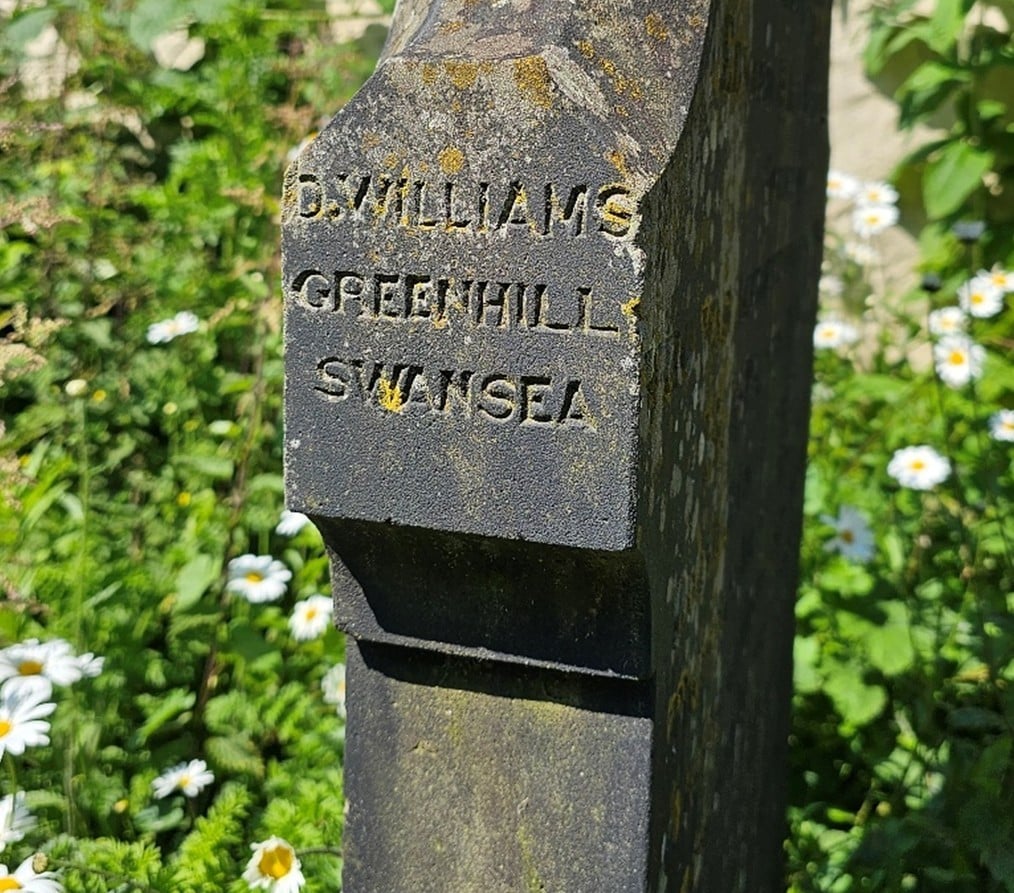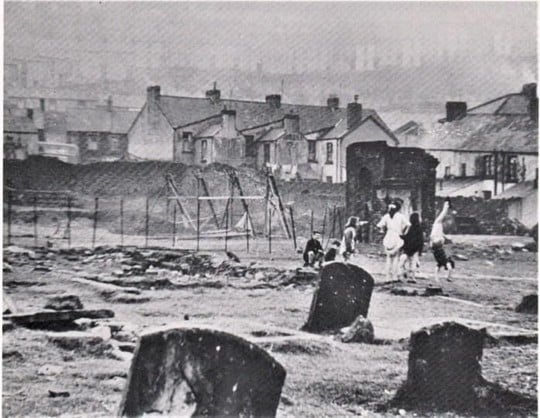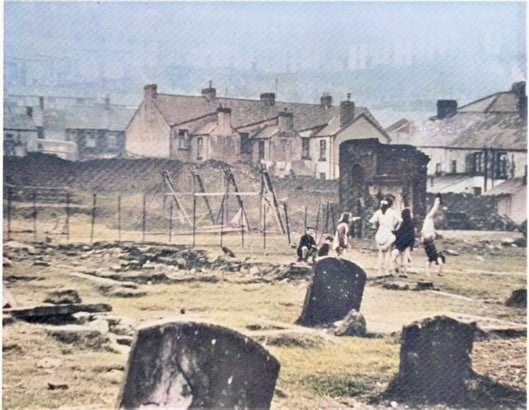The Graveyards of Greenhill
The Graveyards of Greenhill – St John’s Juxta and St Matthew’s
Though now nestled within a vibrant urban landscape, Greenhill holds within it two sacred and historically rich burial grounds — each a repository of Swansea’s layered past, communal memory, and forgotten stories.
The Churchyard of St John’s Juxta (later St Matthew’s Church)
The burial ground directly surrounding Matthew’s House, formerly St John’s Church and later St Matthew’s, served as a key resting place for Swansea’s urban poor and working classes throughout the 18th and 19th centuries. Its graves, many of which remain visible today, tell of epidemics, poverty, literary figures, and religious transformation.
This parochial churchyard played an essential role in the identity of Greenhill. It was the final resting place for the celebrated literary figure Ann of Swansea (Ann Julia Kemble) — though her headstone no longer remains onsite, her burial there is historically attested. (See Point 9 for Ann’s story).The graveyard’s significance deepened during the early 1800s as Swansea grew into a major port and industrial centre, and Greenhill became home to Irish immigrants, artisans, and cholera victims.
The Additional Burial Ground to St Mary’s (Swan Street Cemetery)
Just west of the churchyard, beyond the boundary wall of St Matthew’s, lies a second burial ground — once attached to St Mary’s Church, the main parish church of Swansea. This cemetery was dedicated in 1833, one year after a devastating cholera epidemic, to relieve overcrowding in existing burial plots.
At its centre stood a modest cemetery chapel, later repurposed into a mission chapel and temperance hall by the 1870s. This adaptive reuse reflected the community’s shifting needs and the practical challenges of managing inner-city burial grounds.
However, by 1879, this graveyard had fallen into serious disrepair, as captured in a vivid letter to The Cambrian newspaper:
“Walk up Swan Street and look in at the gate, and what a picture of desolation meets the eye… tombstones in all stages of decay, some broken, some tottering… The slightest suspicion of small undulations in the ground suggests… many poor bodies buried here with no memorial to mark the spot.”
— The Cambrian, 1 August 1879
This powerful account underscores the era’s neglect of working-class dead and the hidden history within urban graveyards. The same article also notes that Ann of Swansea “sleeps in this desolate place,” though this may reflect confusion between the two nearby cemeteries.
Restoration and Commemoration
In 1887, a widespread community campaign led by John Hopkins of Mansel Terrace brought significant improvements to both graveyards. Trees were planted, pathways laid, and extensive levelling was done to restore dignity to these spaces. Hopkins raised £43 1s, which went toward planting and landscaping, though he personally covered a further £16 to complete the project.
“Thanks to the subscribers… in a few years it will in all probability become a pleasant and pretty spot in the centre of a thickly-populated district.”
— The Cambrian, 1 July 1887
The restoration efforts represented more than tidying-up — they were a form of social and spiritual redress, honouring the forgotten and ensuring a visual marker of care in a rapidly industrialising town.
Modern Preservation Efforts
Today, much of the Greenhill graveyard terrain has been documented using CAD (drawings that are detailed 2D and 3D digital illustrations or models of real-world objects, components, or projects created using computer-aided design (CAD) software) drawings, blueprint surveys, and digital scans. These meticulous records, created before the current development of Greenhill Gardens by Matthew’s House and diligently carried out by the Hill Church Charity and Matthew’s House, ensure the heritage of the site is not lost, even as the physical space evolves. The area behind Matthew’s House where the second burial ground was (St Mary’s Church overflow graveyard) is no longer there, cleared due to persistent vandalism and years of neglect that left it overgrown, damaged, and unsafe for visitors.
These initiatives safeguard grave locations, headstone texts, and memorial architecture, enabling historians, genealogists, and families to reconnect with Swansea’s past.
Interpretation Today
Together, these two graveyards form a sacred twin anchor in the story of Greenhill. Their preservation reflects the importance of memory in civic life — from cholera victims to poets, from neglected cemeteries to renewed green spaces.
Their stones may be worn and few, but their stories endure.





